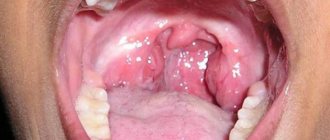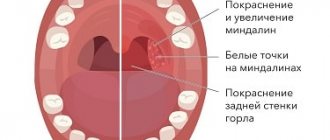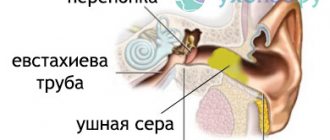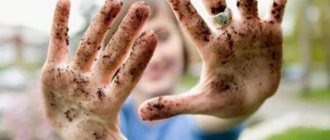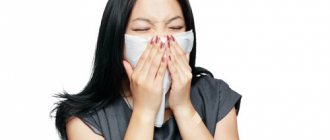Category: Traditional medicine, Succulents Published 09/29/2018 · Comments: · Reading time: 10 min · Views: 14,591
Even ancient healers knew about the healing properties of this succulent. They actively used it for a variety of purposes, as they indicated in their medical treatises. Surprisingly, the first mention of aloe as a medicinal plant dates back to 2000 BC. e.
And today the succulent is successfully used in the pharmaceutical industry; aloe extract is included in drugs and biological additives. And in addition, you can prepare medicines from juice and gel at home: aloe ointment, infusions, drops, solutions, balms from juice, single-component and multi-component - there are many recipes for various ailments that are not inferior in effectiveness to pharmacy ones. No wonder this succulent received the nickname “windowsill doctor.”
Composition of aloe juice
Aloe juice contains a sufficient amount of useful substances, thanks to which it has acquired such value:
- vitamins A, B, C, E;
- more than 3-0 minerals (including manganese, magnesium, potassium, zinc and phosphorus);
- organic compounds (including salicylic acid and glucose);
- amino acids, about twenty can be identified;
- allantoin, which gives a noticeable moisturizing effect;
- acemanan, necessary to increase the body's protective functions.
Composition and calorie content of the plant
This plant contains at least 75 nutrients and about 200 active components in various concentrations.
Table of the main substances contained in aloe leaves:
| Name of substance | Properties | Impact on the body |
| Aloin | Has a laxative effect on the body | Stimulates intestinal motility |
| Anthraquinones | They have a laxative effect, antibacterial and antiviral effect. | Irritates the intestines |
| Saponin - glycoside | Characterized by anti-inflammatory, antiseptic and cleansing properties | Stimulates the central nervous system |
| Hexuronic acid | Has antioxidant properties | Removes toxins, stimulates cell growth |
| Ramnose | Increases cell vitality | Nourishes the skin at the cellular level |
| Oxidase, catalase, aliinase, amylase, cellulase, | Enzymes with proteolytic properties | Promote the breakdown of difficult-to-digest foods |
| Alpha amylase | Has anti-inflammatory properties | Fights tissue inflammation and swelling |
In addition, aloe juice contains essential and non-essential amino acids, a complex of minerals and vitamins, and the calorie content is only 20 kcal per 100 g of product.
It is thanks to such a wide list of chemical substances that agave has found wide application in many areas of human life.
Beneficial properties of aloe juice
Considering such a rich composition, we can safely say that aloe juice is actually very beneficial for the human body. It has the following medicinal properties:
- normalization of pressure;
- reduction of cholesterol in the blood;
- enrichment of the whole body with useful substances, especially those that are missing;
- weight loss;
- maintaining all organs of the body in good shape;
- increasing natural protection;
- giving the skin elasticity.
Which aloe to choose
It is believed that only this species does not provoke the growth of cancer cells due to the substance it contains called Acemannan, which promotes regeneration at the cellular level.
According to experts, the highest concentration of nutrients is observed in plants grown in open ground . For treatment, use the lower leaves of the plant, which are 18 cm long and at least 3 years old. Younger plants do not have sufficient medicinal properties.
It is recommended not to water the plant two weeks before cutting off the leaves , so the concentration of nutrients will be higher.
Treatment with aloe juice
The use of aloe juice dates back to ancient times, when people did not yet know medicine. It was used by the Indians to improve the digestive system, and it was also used to treat the stomach in ancient China. But the Cubans treated colds with juice.
However, this does not mean that he has been forgotten now. It treats inflammatory processes that can occur in the body, and also promotes the healing of small wounds and scratches. Aloe juice is instilled into the eyes to treat myopia, cataracts, and conjunctivitis. Thanks to its rich composition, this product helps improve blood supply to the retina.
Aloe juice is also widely used in case of gastrointestinal problems:
- stomach ulcer;
- gastritis with low acidity;
- colitis;
- heartburn;
- diabetes;
- gastroenteritis.
This very useful remedy best cleanses the body of toxins. It also heals mucosal ulcers and helps improve metabolic processes. If you actively use aloe juice, then in this case the work of the intestines and stomach will stabilize.
Aloe juice also has a positive effect on the cardiovascular system. Even if you take about 10 or 20 ml of juice daily, in this case cholesterol will drop by 15% in a few months. Among other things, squeezing helps reduce the risk of coronary disease.
Aloe juice is also used as a means of restoring strength after serious illnesses and poisoning. It also treats:
- migraine;
- asthma;
- psoriasis;
- herpes;
- nervousness and stress;
- acute rhinitis;
- varicose veins;
- allergies.
Contraindications
Any remedy that is aimed at treatment (even a completely natural one, like aloe) has its limitations in use. This means that before using recipes you should consult not only a specialized doctor, but also an allergist. This way you will be able to avoid accidental negative effects when taking folk remedies. Honey and aloe are strictly not recommended for:
- pregnancy;
- allergies to aloe or honey;
- fibrous formations, benign tumors, acute oncology;
- gastric, hemorrhoidal, uterine and other bleeding, open damage to the gastric or intestinal mucosa;
- during the period of exacerbation of diseases of the kidneys, gall or bladder, kidneys.
Harm of aloe juice
The benefits of aloe juice are clear, but what harm can it cause to the human body? First of all, you should not use this remedy if you have any allergic reactions. You should also be careful when drinking juice in case of chronic diseases, especially if it is epilepsy. If you wish, it is best to first consult with your doctor.
Aloe juice is contraindicated for bleeding, hemorrhoids, cystitis and sudden changes in blood pressure. It is best for pregnant women to avoid aloe juice, as well as those who are breastfeeding. Children under three years of age should also not be given aloe juice.
It is also necessary to observe the correct dosage, otherwise there will be intestinal irritation. Then unpleasant symptoms such as pain and diarrhea will be annoying. If ulcers or cracks are found in the intestines, then it is better to forget about juice treatment.
Medicinal type of Aloe vera
Aloe vera _
) is one of the types of plants that would be more correctly called
aloe vera .
But both names are used equally. Aloe indoors: the most decorative types of succulents (read more)
Aloe vera is a succulent plant with a short stem. Thick fleshy leaves form a dense rosette, which under natural conditions grows up to 60 cm in diameter. Aloe vera leaves are gray with small spots on the surface. The edges of the leaf blade are covered with small spines. The root system is poorly developed. Aloe vera flowers are tubular, of different shades of orange, but you can only see them in natural conditions - your “healer” will not want to bloom on the windowsill.
How to squeeze juice from aloe at home?
It is not necessary to buy aloe juice at the pharmacy; if you have the plant at home, then you can simply squeeze it. Before this, the plant is not watered for 8 or 14 days. It is better to cut off the lower or middle leaves. They are usually large and fleshy, and reach a length of 18 cm or even more. Side shoots about 15 cm in length are also suitable.
It is recommended to wash the cut leaves, dry them thoroughly and keep them in the refrigerator for about two weeks, and then squeeze the juice. To obtain juice, the aloe leaf is crushed with a knife and then squeezed through a bandage or gauze.
There is also another way to obtain healing juice. In this case, a blender or a meat grinder is used to grind the leaves, and only then they are squeezed using gauze.
Features of storage of the product
If you are preparing aloe juice at home and need it to be stored for a long time, before doing so you need to infuse the plant for 10 days in a cool place. Carefully cut off the largest parts of the plant, store them in airtight containers or bags, and place them in the refrigerator. After 10 days, you can safely remove all the leaves from the bags and wash them, then pat them dry with a towel.
After extraction, the juice is ready for consumption, but without preservatives it will not live longer than 3 days. If you need long-term preservation, you need to turn to medical alcohol, the juice needs to be diluted in proportions of 1 to 1. Find dark-colored containers, sterilize them, and pour the resulting mixture into these containers, close and hide in the refrigerator. The most important point in storing juice at home is to prevent air from entering, it will kill all the medicinal properties in it.
How to take aloe juice?
Traditional medicine knows many ways to use aloe juice. It's as easy as stirring it in a glass of water. One spoon of juice is enough. Use one dessert spoon three times a day. However, it should be borne in mind that it tastes bitter, so not everyone will want to drink such a medicine. That is why it is recommended to add juice to tea, which will be a good help in case of a cold.
And in case of a runny nose, you can prepare the following remedy: a teaspoon of onion juice and a few tablespoons of aloe juice and honey. Place no more than three drops into each nostril. Or you can simply dilute it in warm water.
For diseases such as stomatitis and periodontitis, you should rinse your mouth with aloe juice. To cure eye inflammation, you need to make lotions from the juice, diluted in water in a ratio of 1:10.
It is important to consider one point: freshly squeezed aloe juice is not stored, but used immediately.
Aloe juice also comes in the form of sabur, which has the consistency of a gel. It is used internally as a laxative, and the dosage should be small: 0.1 g of sabur, previously dissolved in water, is mixed with a preparation made from rhubarb extract. The same amount of gel can be used as a choleretic agent if there are problems with the gastrointestinal tract.
Dosage forms
The aloe plant is used in traditional and folk medicine in various dosage forms. Depending on the problem that needs to be solved, the most effective option is selected.
In addition to juice, these can be:
- syrups;
- gels;
- tinctures;
- liquid aloe extract.
Agave is used in complex treatment:
- ophthalmological pathologies;
- chronic gastritis;
- tuberculosis;
- diseases of the biliary tract;
- rhinitis;
- dental disorders;
- ulcers of the stomach and duodenum;
- anemia;
- intoxications;
- infectious diseases.
A powerful immunomodulator helps in the overall recovery and strengthening of the body after a long illness, improves the health of patients with chronic pathologies. The drugs can be bought at a pharmacy or prepared at home.
For eyes
The composition of aloe drops used for the eyes was developed by the famous Russian ophthalmologist Vladimir Filatov. He studied plant biostimulants and came to the conclusion that aloe kept in darkness and cold improves the condition of the visual organs in cases of atrophy of the optic nerve, cataracts, conjunctivitis, myopia, farsightedness, and other disorders.
Now the pharmaceutical industry offers eye drops called “Aloe extract according to Filatov.” Their composition is supplemented:
- honey;
- phytoncides;
- vitamins;
- water with silver ions.
These additives enhance the therapeutic effect of the drug and increase its shelf life.
Similar drops were patented by ophthalmologist Svyatoslav Fedorov (“Aloe extract according to Fedorov”), which, in addition to agave, contain antioxidants, folic acid, and vitamin B. The product is used to prevent clouding of the lens.
Pharmacy medications are good means of preventing eye diseases and are effective in the initial stages of disorders.
An analogue of the drops can be prepared at home. To do this, the pulp of agave leaves is squeezed through cheesecloth and diluted with boiled water in a ratio of 1:10 (you can boil the solution for a couple of minutes). All containers and devices for making eye drops must first be sterilized.
Attention: undiluted aloe juice is prohibited from dripping into the eyes!
Instill the product twice a day (a drop in each eye) for three weeks. Then they take a month's break, after which they repeat the course.
Nasal drops
Injecting aloe into the nose is especially effective at the very beginning of the disease. The plant accelerates the recovery process from influenza, acute respiratory infections, acute respiratory viral infections, destroying harmful microorganisms. Thanks to its healing properties, swelling of the mucous membranes of the sinuses is relieved, breathing becomes freer.
To achieve a positive effect, you need to instill 2-5 drops of aloe juice into each nostril three times a day.
If itching or burning occurs, stop using the flower, rinse your nose, and consult a therapist.
Aloe injections
Injection of aloe is indicated for eye diseases, asthma, and ulcers of the digestive organs. The drugs stimulate blood circulation and promote tissue regeneration.
Attention: giving injections without a doctor’s prescription is prohibited!
The dosage is selected depending on the patient’s age:
- children from three to five years old – 0.2–0.3 ml per day;
- from 5 to 18 years – 0.5 ml per day;
- over 18 years old – 1 ml per day.
Administration is allowed subcutaneously (in the abdomen or shoulder) and intramuscularly - in the thigh or buttock.
Gel
Aloe vera gel is available for external and internal use. The product is applied to the skin to heal microtraumas, reduce allergic reactions to insect bites, relieve swelling or fatigue of the legs.
Several companies produce dietary supplements based on agave (for example, Herbalife Aloe vera concentrate). Such drugs are recommended to be used in addition to traditional treatment for:
- sore throat;
- dermatological problems;
- helminthic infestations;
- muscle and joint lesions;
- cellulite.
Before using Herbalife Aloe vera, and other similar drugs, you must carefully read the instructions for use.
Attention: the maximum daily dose of the gel for an adult is 120 mg.
If there is no opportunity (or desire) to purchase industrial production means, you can make gel from agave yourself.
The cooking method is as follows:
- Cut off a large leaf.
- Place it vertically in a container for 10 minutes so that the yellowish resin flows out.
- Carefully remove the skin from one side of the leaf.
- Use a spoon to scrape out the gel located inside the resulting “boat”.
- For every quarter glass, add 500 mg of vitamin C or 400 mg of vitamin E. This will keep the gel longer. If the amount of aloe is small, additional ingredients may not be added.
Attention: children can be given dietary supplements only after consultation with a pediatrician!
In addition to medicine, aloe gels are actively used for cosmetic purposes.
Home remedies based on aloe juice
To improve digestion
- Mix together 50 g of juice, 250 g of honey and 350 g of wine, preferably red.
- We insist for about five days.
- Take a large spoon on an empty stomach 3 times a day.
For arthritis
- Mix three large spoons of aloe juice with six tablespoons of honey and nine tablespoons of vodka.
- Wrap the resulting mixture in gauze and apply to the inflamed area.
Ointment with aloe juice and pork fat
This ointment is well suited for the treatment of purulent wounds and burns. You can also lubricate the chest area when coughing.
- We take 200 g of pork fat, and it is important that it is either rendered or internal. If there is no pork, then it can be replaced with badger or ghee butter.
- Mix the fat with 150 g of aloe juice and 100 g of honey.
- Heat until everything dissolves.
- Transfer the finished ointment into a container.
- Can be stored in the refrigerator.
Aloe juice with honey
- This mixture is used to treat colds and coughs, flu, and bronchitis. It also strengthens the immune system and is used in cases of gastritis. Compresses are made with it if there are any skin lesions.
- Take one part juice and the same amount of honey.
- Mix the ingredients together and put them in the refrigerator.
- Take a large spoon before eating.
- The mixture can be stored for about a month.
Immune Strengthening Blend
This mixture can be given to children from the age of twelve.
- Grind 0.5 kg of walnuts, add 100 ml of agave juice and 300 g of liquid honey.
- Squeeze the juice from three lemons.
- Mix everything together.
- Give the child a teaspoon three times a day, preferably on an empty stomach.
Benefit
Two substances are obtained from aloe (agagave): juice and gel. If you slightly damage an agave leaf, pure transparent juice is released, and the gel is its fleshy part. The rich chemical composition of the plant includes:
- B vitamins;
- Carbohydrates;
- Vitamins A and E;
- Tannins.
Its leaves are a source of fiber, resins and flavonoids. Agave can replace many medications, and it is easy to grow at home.
https://www.youtube.com/watch?v=fGW5uGlVNGE
It does not require special conditions, is unpretentious and disinfects the air in the room.
And the juice is used for inflammation of the oral cavity and upper respiratory tract:
- Stomatitis;
- Gingivitis;
- Angina;
- Pharyngitis.
At home, you can make compresses from crushed aloe leaves, they treat:
- Allergic reactions;
- Dermatitis;
- Eczema.
The juice is also consumed orally, and it has an antibacterial effect, it is used for:
- Diseases of the kidneys, liver;
- Diseases of the urinary tract;
- Fungal and infectious diseases.
- For digestive problems.
- Produces bile;
- Increases appetite;
- Stimulates the secretion of digestive glands.
- Relieves various irritations;
- Reduces skin redness after sunburn;
- Moisturizes and tightens it;
- Restores tissue and prevents severe scarring.
The remarkable properties of aloe have found use in:
- Cosmetology;
- Medicine;
- Cooking;
- Traditional methods of treatment.
Agave is useful to have at home, because its leaves can be used all year round. Every day you can prepare aloe vera medicine for yourself at home. The most useful leaves will be those with a dried top, and they must be cut off before direct use, otherwise they will lose all their benefits.
The leaves are picked at the base and the juice can be easily squeezed out with your hands, having first washed and dried the plant. For some recipes, the leaves are passed through a meat grinder or blender.
The aloe skin is easily removed, and the pulp can later be used for various diseases.
You can prepare regenerating juice from agave:
- The plant is not watered for 20 days.
- Cut off the necessary leaves, roll them into clean paper and put them in the refrigerator for a couple of weeks.
- The leaves are crushed, poured with warm boiled water in a ratio of 1 to 3 and put in a cool, dark place, covered with a lid.
- After 2 hours, filter the juice using gauze and pour into a glass bottle.
- This is a long-lasting medicine, so it will last for about 2 weeks.
You can freeze the juice by squeezing it with your hands from the plucked plant. It is used in cosmetology to treat skin problems.
For a long time, aloe juice has been used to treat skin wounds, eye problems, and inflammatory phenomena in the body. They used it to treat skin defects, add it to tea, and prepare vitamin mixtures. Women enjoy using aloe as a dietary supplement due to its laxative properties and use it to care for hair, hands and face. Pharmacology, having studied the composition of a natural medicine, uses it as an ingredient in many medicines.
There should always be a bottle of aloe tincture in your home medicine cabinet. If you simply squeeze the juice from its leaves, it will not be stored for very long, even in the refrigerator. Alcohol tincture, thanks to the preservative properties of alcohol, lasts much longer without loss of properties.
Inside
Depending on what needs to be cured with aloe tincture, it can be taken: on an empty stomach, before meals, during meals, after meals. The dosage also varies depending on the diagnosis. But you should always follow the recommendations regarding the time of taking the tincture and its quantity in order to avoid possible side effects. If alcohol-based medications are contraindicated, you can replace the tincture with aloe juice with honey, a mixture of aloe with water, or a decoction of medicinal herbs.
Externally
Externally, an alcohol tincture of the “house doctor” (as the plant is popularly called) is used in compresses to relieve inflammation and pain in the back and joints. It is used to gargle the throat and mouth for stomatitis, sore throat, and tonsillitis. Aloe tincture is used to get rid of acne, as a cleanser for oily skin, as a disinfectant and anti-inflammatory agent for the treatment of wounds and suppuration. The product is used externally to strengthen hair roots and give hair a healthy appearance.
If you know what medicinal aloe looks like, you can try using it for your own health. And then your experience will confirm (or refute) the experience of those who have already been convinced of the healing qualities of the plant.
Julia: After giving birth, like many others, my hair fell out. Little helped. Then on one forum I read that aloe pulp works wonders. And this is true - after a month of use, under my thin bangs, I grew... another one, such a thick layer. As a result, after a year of regular treatment, I grew a real mane. It was like this only in childhood.
Ilona: Since childhood, our mother taught us to put aloe juice in our noses, and now I do the same for my children (I just dilute it with water). A natural, simple remedy, but very powerful. I call them “vitamins in the nose.” The doctor also told me that homemade rectal suppositories in the form of frozen aloe juice can cope with hemorrhoids in the early stages.
Victoria: In my youth, every summer, every August, I had a misfortune - stye on my eye. I didn’t take off my dark glasses for two weeks. Back then, everyone was treated with home remedies and didn’t go to the pharmacy. Someone advised me to use aloe juice. Without much hope, I started dripping diluted juice onto my swollen eyelid. And, I must say, the problem began to disappear. Interestingly, since then there has been nothing like this for more than 20 years. And I love aloe to this day - I buy shampoos, creams, and pharmaceutical compositions with it.
Juice from aloe leaves in cosmetology
It is known that cosmetology widely uses the juice of a succulent plant in practice. It is added to various hair shampoos, face masks, tonics, lotions, shower gels, creams. But you can also prepare useful masks at home.
Aloe vera juice for face
This product has significant moisturizing properties, and it also promotes sufficient collagen production, which accelerates cell regeneration. It also soothes irritated skin. In addition, the juice is applicable to different skin types, be it oily, combination or even sensitive. It is also able to smooth out wrinkles. You can make masks from it at home:
Mask with aloe juice and yogurt
- We take the following ingredients, 2 large spoons each: aloe juice, yogurt, it is better if the fat content is high, orange juice, preferably with pulp.
- We apply the product not only to the face, including the décolleté, but also to the entire body.
- Massage for about 20 minutes.
- Wash off with warm water.
Mask to improve complexion
- Apply aloe juice once or twice a day to the areas where the pigment appears.
- Massage for 10-15 minutes.
- Wet a cotton swab with warm water and wipe your face with it.
- We repeat the procedure until the pigmentation disappears.
For aging skin
This mask not only smoothes out fine wrinkles, but also gives the epidermis additional nutrition.
- Mix one large spoon of agave juice with two tablespoons of honey.
- Apply to previously cleansed facial skin.
- Keep it for forty minutes.
Aloe juice also helps well against enlarged pores, blackheads and other inflammations, especially if you wipe the skin after taking a bath. And if your skin is oily, then you can beat the white of a chicken (quail) egg and add a dessert spoon of aloe and lemon juice to it. You can also familiarize yourself with the uses and recipes of aloe for the skin around the eyes.
Medicinal properties
The homemade aloe plant has a rich composition, and therefore has a whole range of beneficial effects on the body:
- anti-inflammatory;
- antifungal and antimicrobial;
- soothing (aloe vera-based products are used to treat skin and for cosmetic purposes);
- regenerating (juice helps accelerate wound healing);
- improving the functioning of internal organs.
Even ancient healers used aloe for various purposes. And modern research has proven that this plant is indeed very beneficial for the body, has a positive effect on digestion, immunity, and the human heart.
Use to treat colds
The beneficial properties of aloe are very diverse, but most of all this plant is known for helping to cope with various colds, bronchitis, and sore throat.
The juice can also be used to quickly treat a runny nose in children and adults.
Recipes with aloe juice for bronchitis
Aloe vera is a unique plant that will be useful for many health problems, but it is important to know how to use it correctly. The most effective recipes from the treasury of folk wisdom will help with this.
Juice with honey is very effective for bronchitis and can be used to treat colds. For preparation you will need the following components:
- a glass of juice;
- a glass of honey;
- 100 g of alcohol (you can also prepare an infusion with water, then take 100 g of water).
The procedure is as follows:
- mix the ingredients in a glass jar;
- leave the mixture for 5 days in a cool, dark place.
Advice
This “medicine” is best used in the initial stages of bronchitis or a cold; it will help quickly overcome the disease and avoid complications. Store the infusion in the refrigerator, use 1 tsp. three times a day (before meals).
Aloe, badger fat and cocoa - even children can drink this product, because thanks to cocoa it has a pleasant sweetish taste, and the fat becomes almost imperceptible.
Required components:
- aloe juice – 150 g;
- cocoa – 200 g;
- honey – 300 g;
- badger fat – 100 g.
All components are mixed (the fat must be melted before preparing the drug), and the product should be stored in the refrigerator.
Advice
In case of illness, 3 tsp should be used. three times a day until complete recovery.
Help with sore throat
The beneficial properties of aloe juice make it a powerful weapon in the fight against sore throat. In folk medicine, two effective recipes are known.
Herbal infusion. To prepare it you need:
- aloe juice – 1 tsp;
- St. John's wort leaves - 1 tsp;
- Salvia officinalis leaves – 1 tsp.
How to prepare an infusion?
- All components should be placed in glass containers.
- Pour a glass of boiling water. Infusion time is half an hour.
- Strain.
For angina, take 1 tbsp every 2 hours. l.
You can prepare an infusion with St. John's wort. Required components:
- Aloe juice – 1 tbsp. l.;
- anise fruits – 10 g;
- rose hips – 20 g;
- St. John's wort flowers - 2 tbsp. l.;
- boiling water - 3 cups.
Preparation procedure:
- mix the ingredients in a glass container;
- pour boiling water (3 cups);
- leave for 40 minutes;
- strain.
For angina, the infusion should be taken one third of a glass 15 minutes before meals 4 times a day. You can add a little sugar to the product to give it a pleasant taste.
Use in cosmetology
Aloe is a good remedy for solving a large number of skin problems, such as:
- first wrinkles;
- pimples and acne;
- dark spots;
- burns and wounds;
- inflammatory processes.
The following products based on the juice of this medicinal plant will help rid your skin of acne.
- Lotion. 1 tbsp. l. juice mixed with 2 drops of essential oil (rosemary, tea tree, eucalyptus). The resulting product should be wiped over cleansed problem skin twice a day.
- Alcohol lotion. 2 tbsp. l. Mix alcohol tincture of calendula with 3 tbsp. l. fresh juice. Apply to cleansed skin twice a day.
- Mask for normal and oily skin against acne and acne. 1 tbsp. l. mix juice with 1 egg yolk and add 1 tsp. fresh lemon juice. The mask is applied to a cleansed face for 10-15 minutes, after which it is necessary to rinse it off and use a moisturizer.
- Clay based mask. It’s easy to prepare: in 1 tbsp. l. clay (white or blue) add aloe juice, 1/3 tsp is enough. The composition is mixed (you should get a thick mask with a creamy consistency), applied to clean skin for about 15 minutes, then washed off.
Advice
You can use masks no more than once a week.
In the fight against dandruff
Aloe juice can also be used to solve scalp problems, in particular to eliminate dandruff. It is not difficult to prepare an effective cosmetic mask.
Required components:
- aloe juice – 3 tbsp. l.;
- honey - 3 tbsp. l.;
- garlic juice – 2 tbsp. l.;
- raw egg yolks – 2 pcs.;
How to prepare the product?
- Prepare aloe juice.
- Squeeze the juice out of the garlic.
- Mix all ingredients.
The finished mask is used according to the following scheme.
- Rub the product into the scalp.
- Next, distribute along the length of the hair.
- Cover your hair with cellophane and top with a terry towel to maintain the temperature.
- Wait 45 minutes.
- Wash your hair with your regular shampoo.
This product will help restore strength and healthy shine to your hair and get rid of dandruff.
During pregnancy and breastfeeding
A woman in an interesting position will worry whether she can eat aloe or should she abstain.
Considering the large hormonal overloads that the expectant mother’s body experiences, experts do not recommend consuming aloe orally . Biologically active plant substances such as anthraquinones can provoke contraction of the uterine muscles, resulting in miscarriage.
The use of aloe by a child should be agreed with the pediatrician


